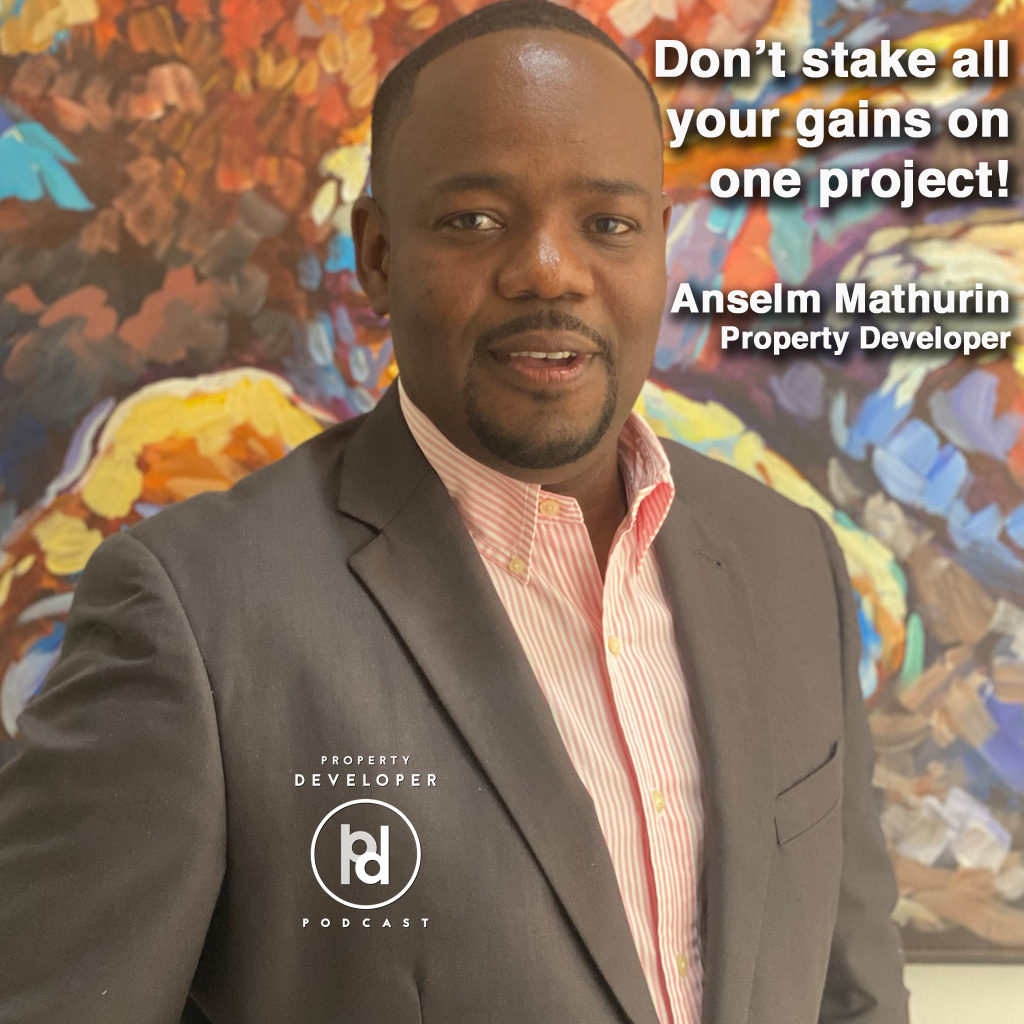Podcast: Play in new window | Download
Subscribe: RSS | Listen to the Property Developer Podcast
 Sales are the lynch pin of any good property development project, and to get sales your product needs to appeal to a buyer. Give the buyer what they want and making the sale becomes easier.
Sales are the lynch pin of any good property development project, and to get sales your product needs to appeal to a buyer. Give the buyer what they want and making the sale becomes easier.
So how do you come to understand what a buyer wants? We talk to a seasoned property developer to find out what they do to profile their buyers.
With Jeremy De Zylva from Resolution Property Group we cover:what Jeremy learnt from working for large corporate organizations
- the one key thing that developers can focus on to make their projects a success and stand out from the competition
- how to deal with markets changing mid-project
Keep an ear out for how structures can make a big difference to being able to offer a vendor the price they want while still giving you control of the site.
Property Development Training
If you are interested in learning the fundamentals of property development, in your own time and at your own pace, then be sure to head over to www.propertydevelopertraining.com and take a look. I take you step by step through the development process so you know exactly what is needed to find a site, run a feasibility and complete a small scale property development, be that a duplex or 3 or 4 unit site. The training includes a bonus program called Taking It To The Next Level for people who may want to go into developing full-time.
So head over to propertydevelopertraining.com and take a look… I would love to see you on the inside…
Property Developer Quiz
Keen to find out how ready you might be to become a developer? Then take the Property Developer Quiz (https://www.propertydevelopertraining.com/quiz) and get a sense of where you are at…
Become a Million Dollar Property Developer
 Grab my book Become a Million Dollar Property Developer about my journey into property development. This book is ideal for anyone who intends to get into small-scale property development and wants an insider’s guide to successfully obtaining wealth, fulfilment, and glory.
Grab my book Become a Million Dollar Property Developer about my journey into property development. This book is ideal for anyone who intends to get into small-scale property development and wants an insider’s guide to successfully obtaining wealth, fulfilment, and glory.
In this book, Justin will share how he succeeded in delivering a 20-townhouse project on his first property development project and what he learned along the way.
Many people have a dream of becoming a property developer. They aspire to build properties, grow portfolios, and amass great wealth. However, many people often struggle with making the leap into property development.
This book has the answers for how you can make the leap into property development. Grab your copy now.
Social Connection
Property Developer Podcast Facebook – https://www.facebook.com/propertydeveloperpodcast
Property Developer Podcast Instagram – https://www.instagram.com/property_developer_podcast/
Property Developer Podcast LinkedIn – https://www.linkedin.com/company/property-developer-podcastLinks
Links
Resolution Property Group – https://www.resolutionpg.com.au/
Project Update
Here’s the latest from my current project…
Episode Summary
In this episode of the Property Developer Podcast, host Justin Gehde speaks with Jeremy De Zylva from Resolution Property Group, a property development and investment firm based in Australia. Jeremy has over 20 years of experience in property development, and in this episode, he shares his insights on the concept of “buyer-driven” property development projects.
The Basics of Buyer-Driven Property Development Projects
According to Jeremy, the term “buyer-driven” refers to a property development project that is designed and executed with the needs and desires of the end user in mind. In contrast to a traditional property development project, which may be driven primarily by financial considerations or the vision of the developer, a buyer-driven project is centered around the needs of the target market.
Jeremy notes that buyer-driven projects can take many forms, from multi-unit residential developments to commercial projects like shopping centers and office buildings. Regardless of the type of development, the key is to understand the needs and wants of the target market and to design the project accordingly.
The Benefits of Buyer-Driven Property Development
One of the primary benefits of a buyer-driven property development project is that it can help to mitigate some of the risks associated with traditional property development. By focusing on the needs and desires of the target market, a developer can be more confident that there will be demand for the finished product. This can help to reduce the risk of oversupply or a lack of demand that can lead to financial losses.
In addition, buyer-driven projects can often be more profitable than traditional projects, as the finished product is more likely to meet the needs of the target market and command a higher price point. Jeremy notes that this can be particularly true in markets where there is high demand for certain types of properties, such as affordable housing or commercial space in a particular location.
Designing a Successful Buyer-Driven Project
According to Jeremy, the key to designing a successful buyer-driven project is to start with a deep understanding of the target market. This involves conducting thorough research into the demographics, preferences, and needs of the target market, as well as analyzing market trends and other factors that may impact demand.
Once this research is complete, the developer can begin to design the project with the target market in mind. Jeremy notes that this involves everything from the overall concept and design of the project to the specific amenities and features that are included. The goal is to create a product that is not only desirable to the target market but that also meets their needs in a practical and functional way.
Challenges and Risks
While there are many benefits to buyer-driven property development, Jeremy notes that there are also some challenges and risks to consider. One of the primary risks is the potential for over-reliance on the preferences and needs of the target market. While it’s important to design the project with the target market in mind, it’s also important to ensure that the project is financially feasible and sustainable over the long term.
In addition, buyer-driven projects can be more complex and time-consuming than traditional projects, as there may be more research and analysis required upfront. This can require a significant investment of time and resources, and there is always the risk that the project may not ultimately meet the needs or preferences of the target market.
Tips for Success
To succeed in buyer-driven property development, Jeremy offers several tips:
1. Start with a deep understanding of the target market and their needs and preferences.
2. Be willing to invest the time and resources required for thorough research and analysis.
3. Focus on creating a product that is both desirable and practical for the target market.
4. Be mindful of the financial feasibility and long-term sustainability of the project.
5. Build strong relationships with industry partners, such as architects, builders, and financiers, who share your vision for the project.
6. Be prepared to adapt and modify your plans as you receive feedback from the target market.
7. Stay up-to-date with market trends and changes in the industry to ensure that your project remains relevant and competitive.
In conclusion, buyer-driven property development projects can offer many benefits over traditional property development, including reduced risks, higher profitability, and greater market demand. However, designing a successful buyer-driven project requires a deep understanding of the target market, as well as a willingness to invest the time and resources required for thorough research and analysis.
Ultimately, the key to success in buyer-driven property development is to remain focused on the needs and desires of the end user, and to work closely with industry partners who share your vision for the project. With careful planning, research, and execution, buyer-driven property development can offer a profitable and sustainable path to success for property developers.


